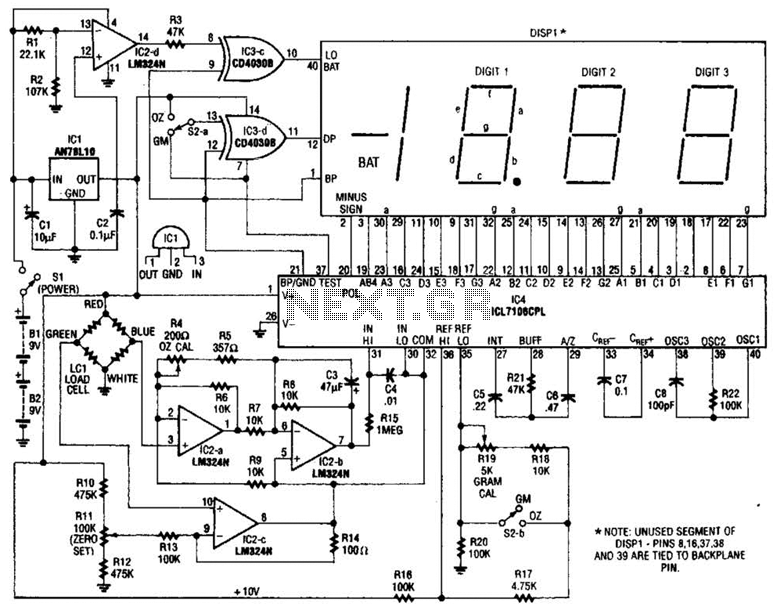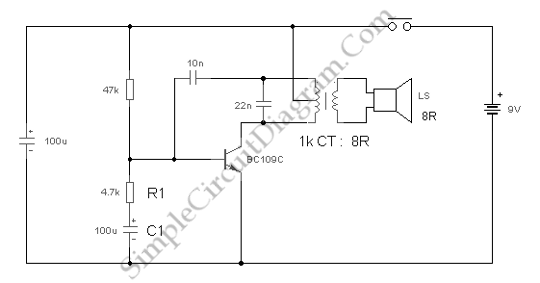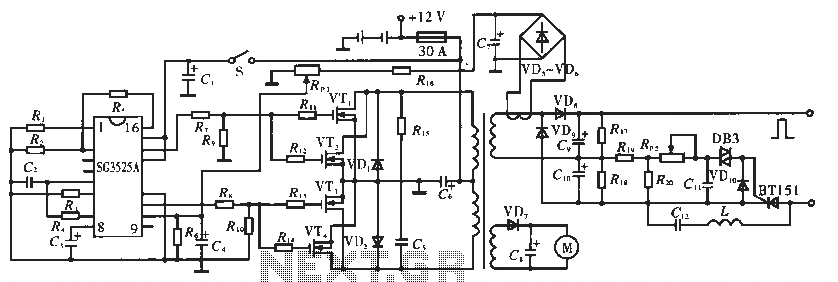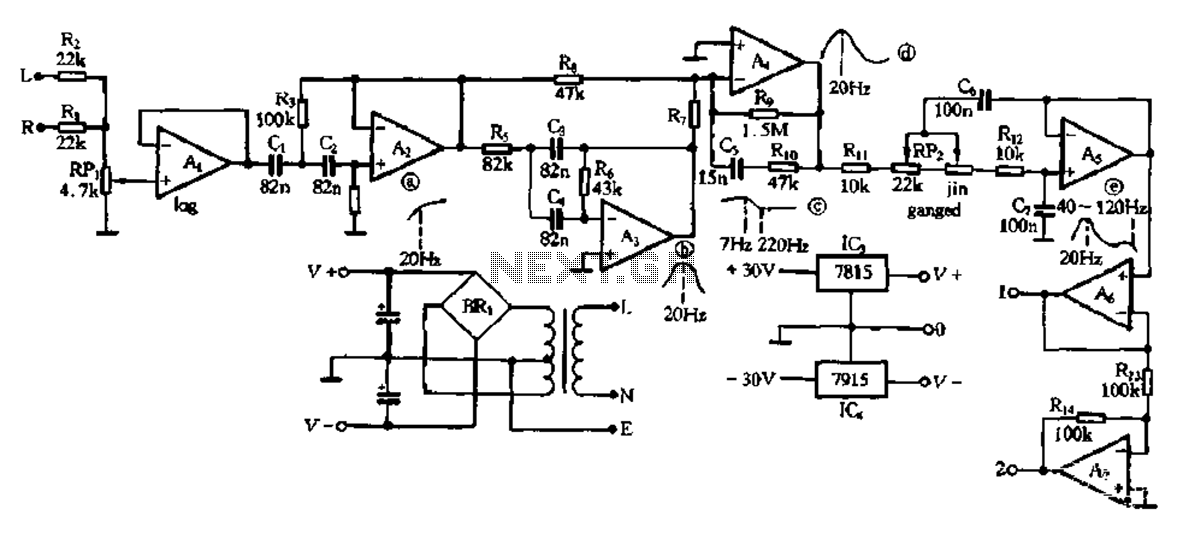
electronic canary
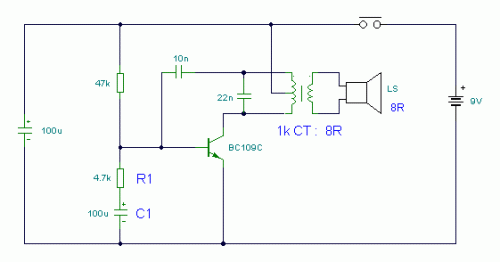
A modified Hartley oscillator can be utilized to attract new friends or serve as a replacement doorbell.
The modified Hartley oscillator is a type of LC oscillator that uses an inductor-capacitor (LC) circuit to generate a continuous wave signal. This oscillator configuration is particularly notable for its simplicity and effectiveness in producing audio frequencies, making it suitable for applications such as sound generation in doorbells or novelty devices.
In a typical Hartley oscillator circuit, two inductors (L1 and L2) and one capacitor (C) are used. The inductors are connected in series, and the output is taken from the junction of the inductors. The feedback path is crucial for sustaining oscillations, which is often provided by a transistor or an operational amplifier. The values of the inductors and capacitor determine the oscillation frequency, which can be adjusted by varying these components.
For the doorbell application, the output signal can be connected to a small speaker or piezo buzzer to produce a chirpy sound when the circuit is activated. The oscillator can be triggered by a push button switch, providing an engaging sound to greet visitors. Additionally, the circuit may include a power supply section, typically consisting of a battery or a low-voltage power adapter, ensuring the oscillator operates efficiently.
The design can be further enhanced by incorporating a variable resistor (potentiometer) to adjust the frequency of the oscillations, allowing customization of the sound produced. This feature can make the doorbell sound unique and more appealing to users. Overall, the modified Hartley oscillator offers a versatile solution for generating audio signals in various applications, making it a valuable component in electronic design.Feeling chirpy? Attract new friends with this modified hartley oscillator. You could also use it as a replacement doorbell.. 🔗 External reference
The modified Hartley oscillator is a type of LC oscillator that uses an inductor-capacitor (LC) circuit to generate a continuous wave signal. This oscillator configuration is particularly notable for its simplicity and effectiveness in producing audio frequencies, making it suitable for applications such as sound generation in doorbells or novelty devices.
In a typical Hartley oscillator circuit, two inductors (L1 and L2) and one capacitor (C) are used. The inductors are connected in series, and the output is taken from the junction of the inductors. The feedback path is crucial for sustaining oscillations, which is often provided by a transistor or an operational amplifier. The values of the inductors and capacitor determine the oscillation frequency, which can be adjusted by varying these components.
For the doorbell application, the output signal can be connected to a small speaker or piezo buzzer to produce a chirpy sound when the circuit is activated. The oscillator can be triggered by a push button switch, providing an engaging sound to greet visitors. Additionally, the circuit may include a power supply section, typically consisting of a battery or a low-voltage power adapter, ensuring the oscillator operates efficiently.
The design can be further enhanced by incorporating a variable resistor (potentiometer) to adjust the frequency of the oscillations, allowing customization of the sound produced. This feature can make the doorbell sound unique and more appealing to users. Overall, the modified Hartley oscillator offers a versatile solution for generating audio signals in various applications, making it a valuable component in electronic design.Feeling chirpy? Attract new friends with this modified hartley oscillator. You could also use it as a replacement doorbell.. 🔗 External reference
